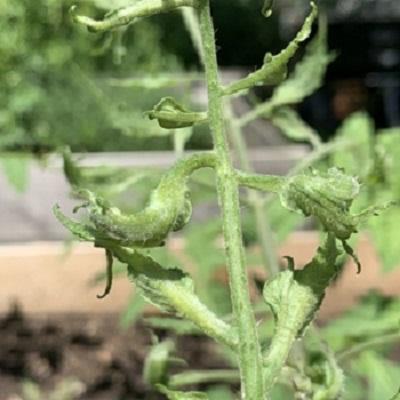What causes damage to plants from herbicides?
Herbicides are products designed to kill undesirable weeds however, misapplied herbicides can cause injury to vegetable plants. Symptoms of herbicide injury often involve discolored or distorted leaves and can easily be confused with other cultural or environmental problems, as well as insect, mite, disease problems, and other pesticide injuries. The method of application and amount applied will determine the level of plant injury. Some herbicides are more readily absorbed through plant roots while others are only absorbed through leaf and stem tissue. Tissue and soil analysis for herbicide residues is impractical and costly.
Herbicide injury usually occurs when weed control spray drifts onto nearby plants. In some cases, herbicides can drift many feet from the site of application. Damage attributable to herbicides should be suspected when:
- More than one type of plant is affected
- Symptoms appear only on one portion of the plant or plants
- Other causes of damage have been ruled out, (such as nutrient deficiencies, air pollution, insects, diseases or virus)
Plant symptoms of some commonly misapplied herbicides
- 2,4-D and MCPP: Twisted and bent shoots and petioles. Note, the ester formulation of 2,4-D is particularly volatile. Tomatoes are very sensitive to 2,4-D (see above photo), with injury from herbicide drift usually occurring in May and June. Leaves become twisted, curled, and strappy and stay small in size. Injury is observed on the youngest leaves. Plants rarely outgrow the injury caused by this growth regulator. Remove plants and re-plant if possible.
- Dicamba: Dwarfed, distorted, and/or discolored foliage.
- Glyphosate: Plants stop growing, remain green for several days, may develop yellow leaves, and then turn to a uniform brown. Leaf distortion and bleached or dead spots may occur. Symptoms may not appear for 7 to 10 days after exposure.

there is enough time for the plants to produce a crop
